Exploring Budapest: A Tale of Two Cities Within a City
19-05-2025
Set along the legendary Danube, Budapest is a city of striking contrasts. On one side, ‘Buda’ rises in serene hills crowned with medieval castles, leafy parks, and quiet cobblestone streets. On the other, ‘Pest’ pulses with energy – its grand boulevards, buzzing cafés, and vibrant culture painting a picture of modern European life. Though united in 1873, Buda and Pest retain distinct personalities that make exploring Budapest an adventure rich in contrast, charm, and character. Whether you’re a history buff, wellness seeker, foodie, or romantic traveler, this blog by FlyingCarpet.travel reveals what not to miss on each side of this unforgettable capital.
Table of Contents
- 1. Things to See on the Buda Side of Budapest
- 2. Buda Castle
- 3. Fisherman’s Bastion
- 4. St Matthias Church
- 5. Gellért Hill & Citadella
- 6. Thermal Baths of Buda
- 7. Hospital in the Rock Museum
- 8. Normafa Park
- 9. What to See on the Pest Side
- 10. Hungarian Parliament Building
- 11. St. Stephen’s Basilica
- 12. Andrássy Avenue
- 13. Central Market Hall
- 14. Jewish Quarter & Dohány Street Synagogue: Soul, Story, and Nightlife
- 15. House of Terror Museum
- 16.Danube Promenade: Bridging the Divide
- 17. Plan Smarter. Travel Deeper.
- 18. Frequently Asked Questions About Traveling to Budapest
Things to See on the ‘Buda Side’ of Budapest
Hilltop history, storybook views, and spa serenity
Steeped in history and perched on rolling hills, the Buda side of Budapest offers breathtaking views, medieval charm, and architectural treasures. From castle walls to thermal baths, this is where you’ll find the city’s royal roots and serene escapes.
Buda Castle
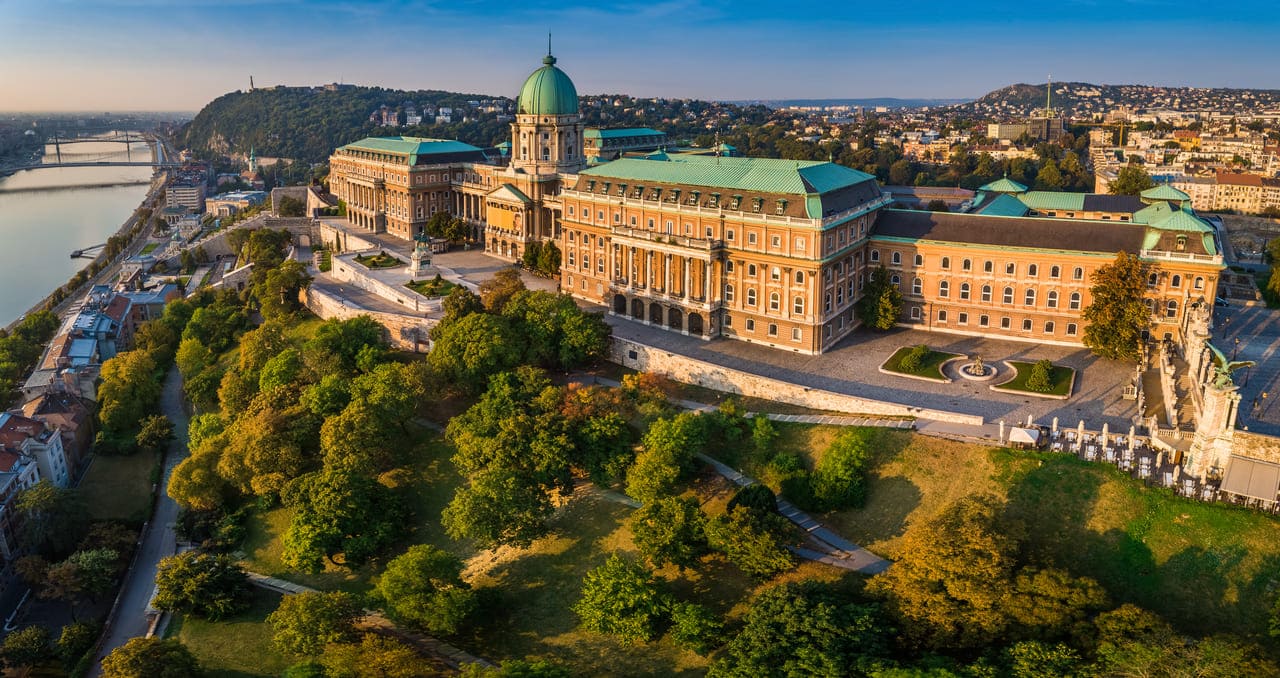
Buda Castle – a timeless symbol of Hungarian heritage and grandeur
Perched high above the Danube, Buda Castle, a UNESCO World Heritage site that towers over the city with its baroque grandeur, was once home to Hungarian kings. Today the sprawling Baroque complex is a cultural hub housing the Budapest History Museum and the Hungarian National Gallery.
Stroll its stately courtyards, trace the city’s dramatic past in museum exhibits, and then step out for a view. At golden hour, join the flock to capture the moment when the palace glows and the rooftops of Pest shimmer across the river. Take our night tour to the castle to unravel mysterious stories that you wouldn’t find in a guidebook.
Fisherman’s Bastion
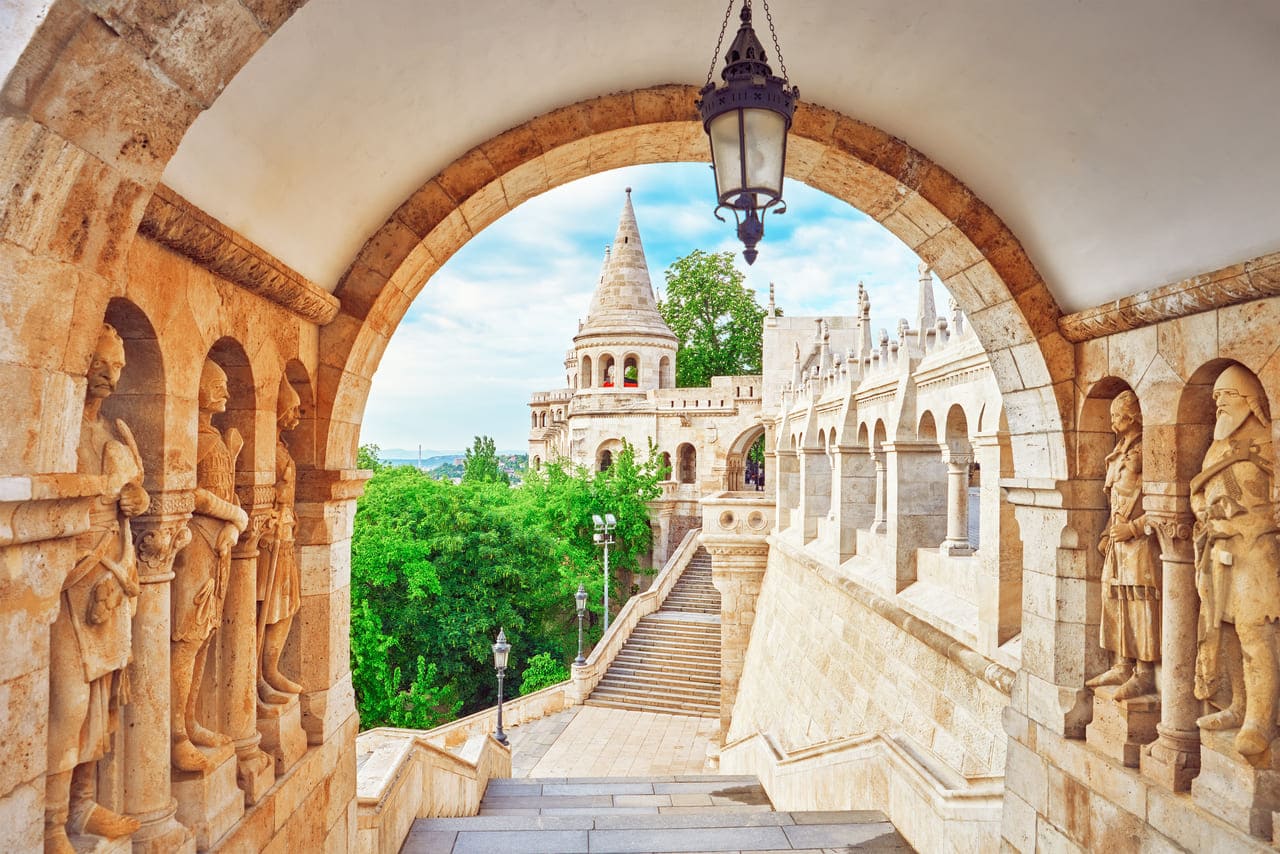
Fisherman’s Bastion – a neo-Gothic tribute to the city’s medieval guardians, with the best views in town
Perched high in the Castle District, Fisherman’s Bastion resembles a medieval fortress, but this white-stone marvel was designed purely to beautify the city and offer sweeping panoramic views over the Danube, with the iconic Parliament building gleaming across the water. Its seven whimsical towers symbolize the original Magyar tribes that settled the Carpathian Basin, adding layers of legend to the dreamy architecture.
Whether you’re an early riser chasing golden hour light or a romantic traveler seeking the perfect postcard moment, this is where Buda’s magic begins. Sip a coffee from a nearby café and watch the city slowly stir below or learn all about Fisherman’s Bastion and more monuments in our walking tour.
St Matthias Church
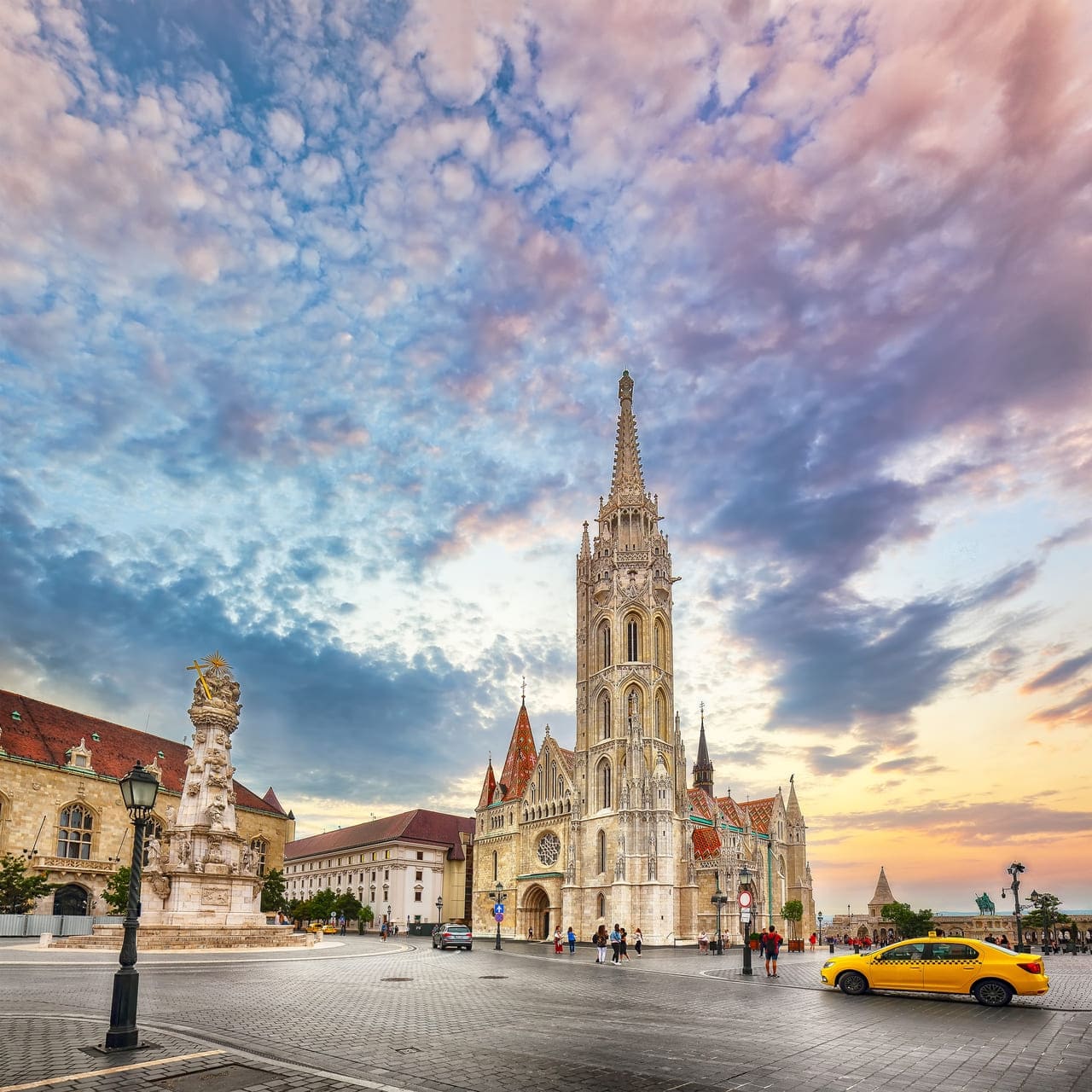
Where kings were crowned and legends linger – the radiant St. Matthias Church of Budapest
Rising beside the storybook turrets of View On Old Fisherman Bastion Budapest. With its colorful Zsolnay-tiled roof, soaring Gothic spires, stained-glass windows and vivid frescoes, the church is a visual feast that blends architectural splendor with deep historical roots. Once the site of royal coronations and even a mosque during Ottoman rule, it’s a place where centuries of Hungarian history echo through every vaulted arch.
Usually, in the evenings, if you time your visit right, it is possible to catch a classical concert within its echoing halls – a soul-stirring experience that ranks among Budapest’s most magical cultural moments. Gain an insider’s understanding of the medieval Hungarian history with a tour that combines Castle District with Matthias Church.
Gellért Hill & Citadella
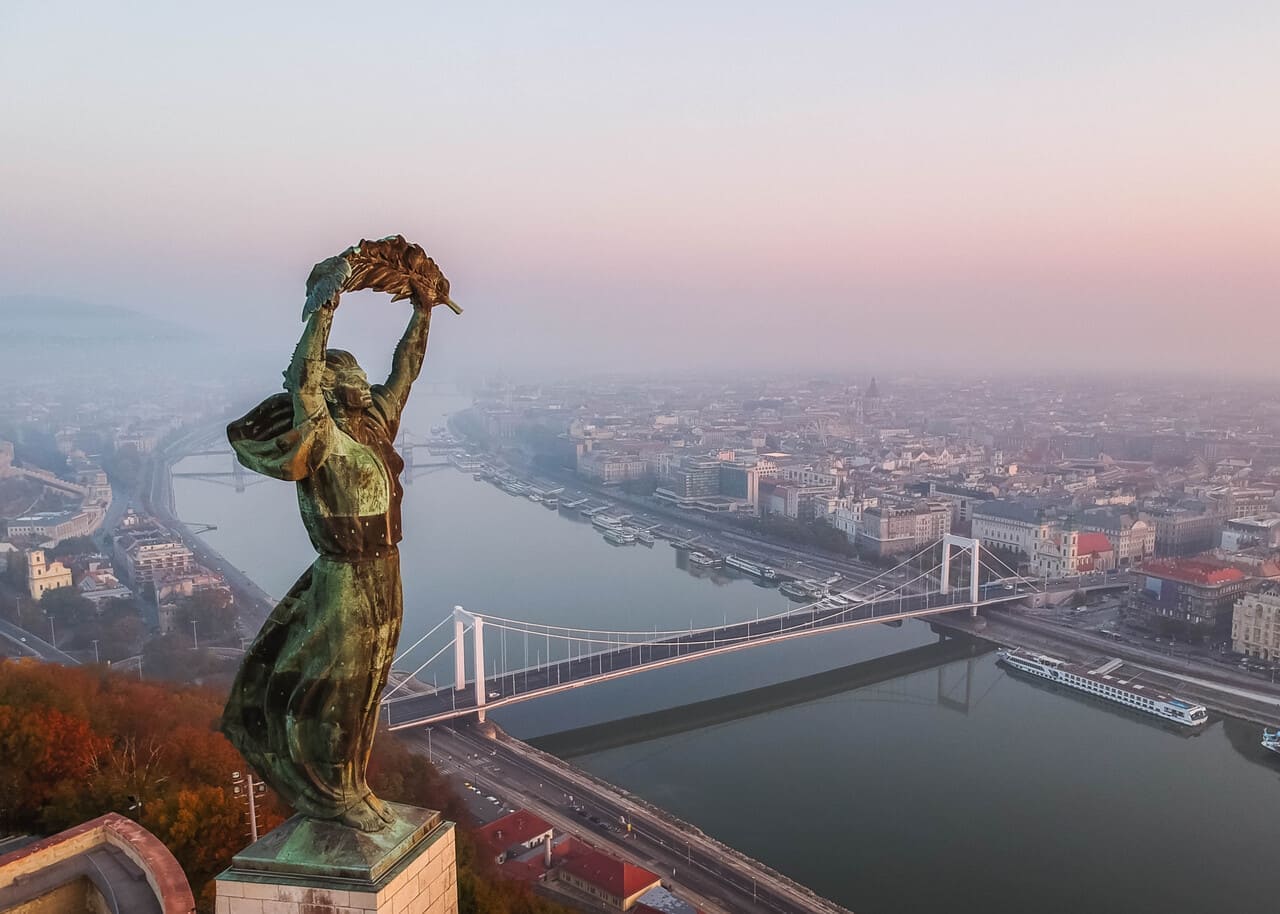
High above the Danube, the Lady of Gellért Hill holds her palm leaf – a timeless symbol of resilience
If you’re chasing the most jaw-dropping vistas in Budapest, Gellért Hill delivers. Rising 235 meters above the Danube, this is a mildly challenging climb that rewards hikers with unmatched panoramic views – from the chain of bridges spanning the river to the shimmering rooftops of both Buda and Pest. The walk up Gellért Hill winds through leafy switchbacks, charming stone staircases, and a series of lookouts, ideal for photo stops.
At the summit, you’ll find the Citadella, a 19th-century fortress built by the Habsburgs after the 1848–49 Hungarian Revolution. Though its military past casts a shadow, today it’s more about open skies than old battles. Standing tall above it all is the powerful city symbol of the Liberty Statue, a female figure holding a palm leaf, erected in 1947 to commemorate Hungary’s liberation.
Want to book a hiking trip with us? Or you’d rather skip the climb and take a taxi or a public transport to get close to the top. Either way, don’t leave Budapest without standing here, where the city spreads out before you like a living postcard.
Thermal Baths of Buda
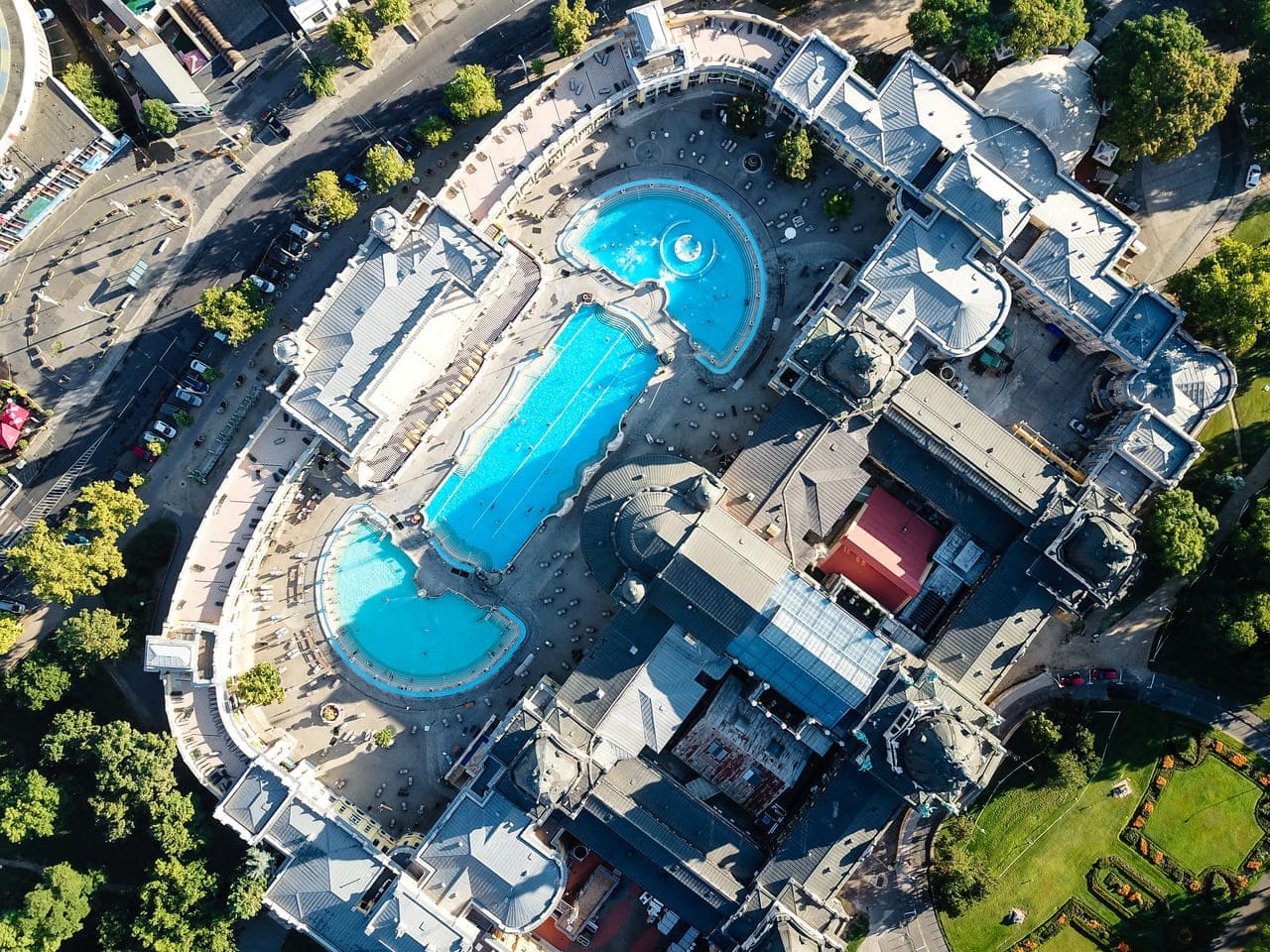
Art Nouveau elegance meets thermal bliss at Budapest’s iconic Gellért Spa
Whether you’re recharging after a day of sightseeing or simply looking to unwind in a one-of-a-kind setting, Buda’s thermal baths offer a unique blend of wellness and wonder. Two of its most iconic bathhouses, Rudas and Gellért, offer completely different, but equally memorable experiences.
Rudas Baths is a centuries-old spa with deep Ottoman roots dating back to 1550. Beneath its signature octagonal dome, steam rises over warm, mineral-rich pools surrounded by ancient stone arches. But Rudas also impresses with its modern side a sleek rooftop thermal pool where you can soak under the sky while gazing across the Danube to the glowing skyline of Pest. It’s an unbeatable mix of old and new.
If your vibe leans more toward elegance and architectural flair, make your way to the Gellért Baths, nestled at the base of Gellért Hill. Housed in the grand Gellért Hotel, this Art Nouveau masterpiece features stained-glass windows, colorful mosaics, marble columns, and open-air pools perfect for lounging.
Hospital in the Rock Museum
Tucked beneath Castle Hill lies one of the city’s most surprising and sobering attractions: the Hospital in the Rock Nuclear Bunker Museum. Originally a WWII emergency hospital carved into the natural caves, it was later expanded into a Cold War–era nuclear bunker. Today, it’s a gripping museum experience, complete with wax figures, vintage medical equipment, and guided tours that plunge you into wartime Budapest. Dimly lit and eerily immersive, this hidden underground labyrinth offers a visceral look at the city’s resilience in times of crisis. It’s not your typical tourist stop, but for those intrigued by dark history and hidden places, it’s a must.
Normafa Park
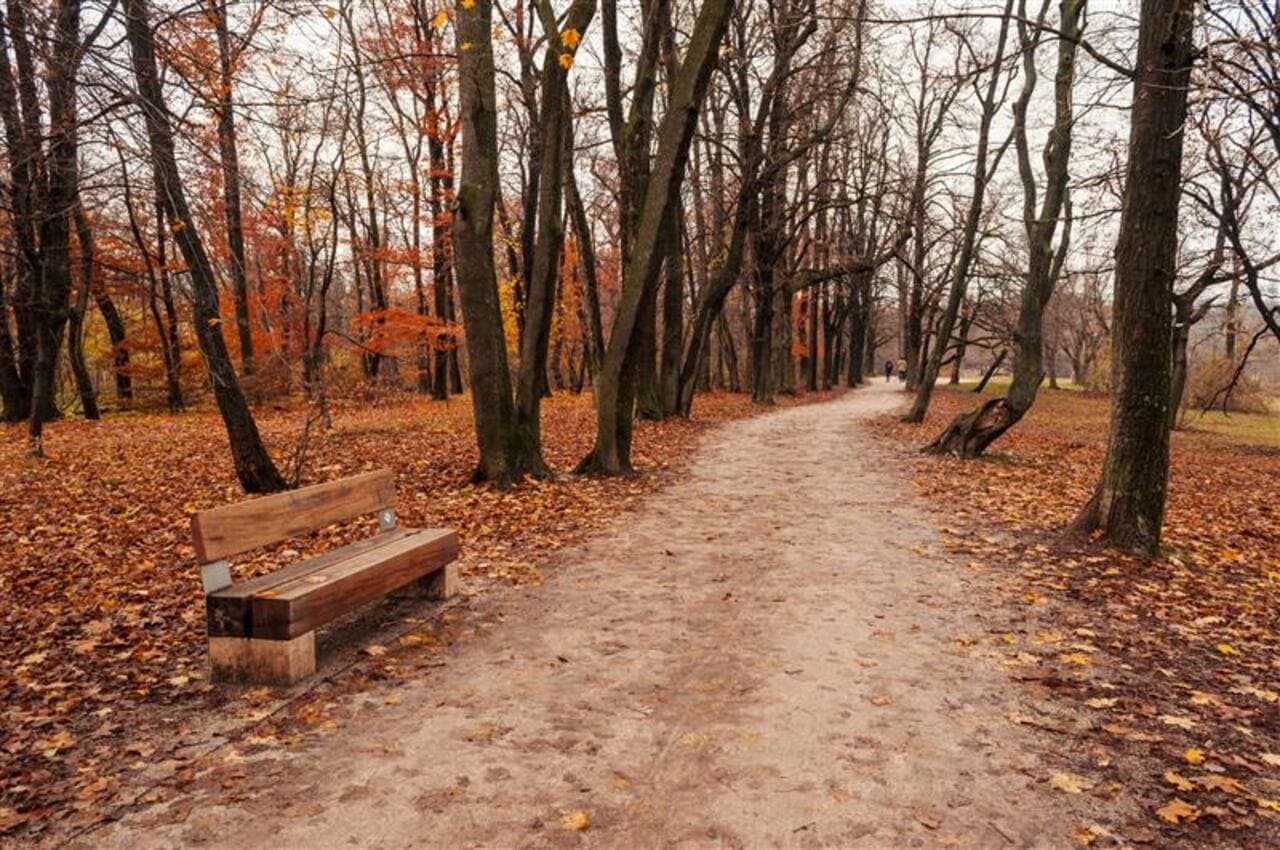
Golden leaves or snowy paths, Normafa is Budapest’s natural escape all year round
For a taste of local life and a healthy dose of green, Normafa delivers serenity just minutes from the bustle of the city center. Nestled in the Buda Hills, this peaceful, pine-scented retreat is a haven for hikers, joggers, families, and nature lovers. Follow forest trails past wildflowers and meadows or just breathe deep and enjoy panoramic views over Budapest. Visit in spring for blooming cherry trees, or in autumn when fiery leaves blanket the hills.
What to See on the 'Pest Side' of Budapest
Architectural grandeur, cultural pulse, and late-night energy
Flat, vibrant, and buzzing with life, the Pest side is the heart of modern Budapest. Home to iconic landmarks, cultural hubs, grand boulevards, and lively cafés, this is where history meets energy in every direction.
Hungarian Parliament Building
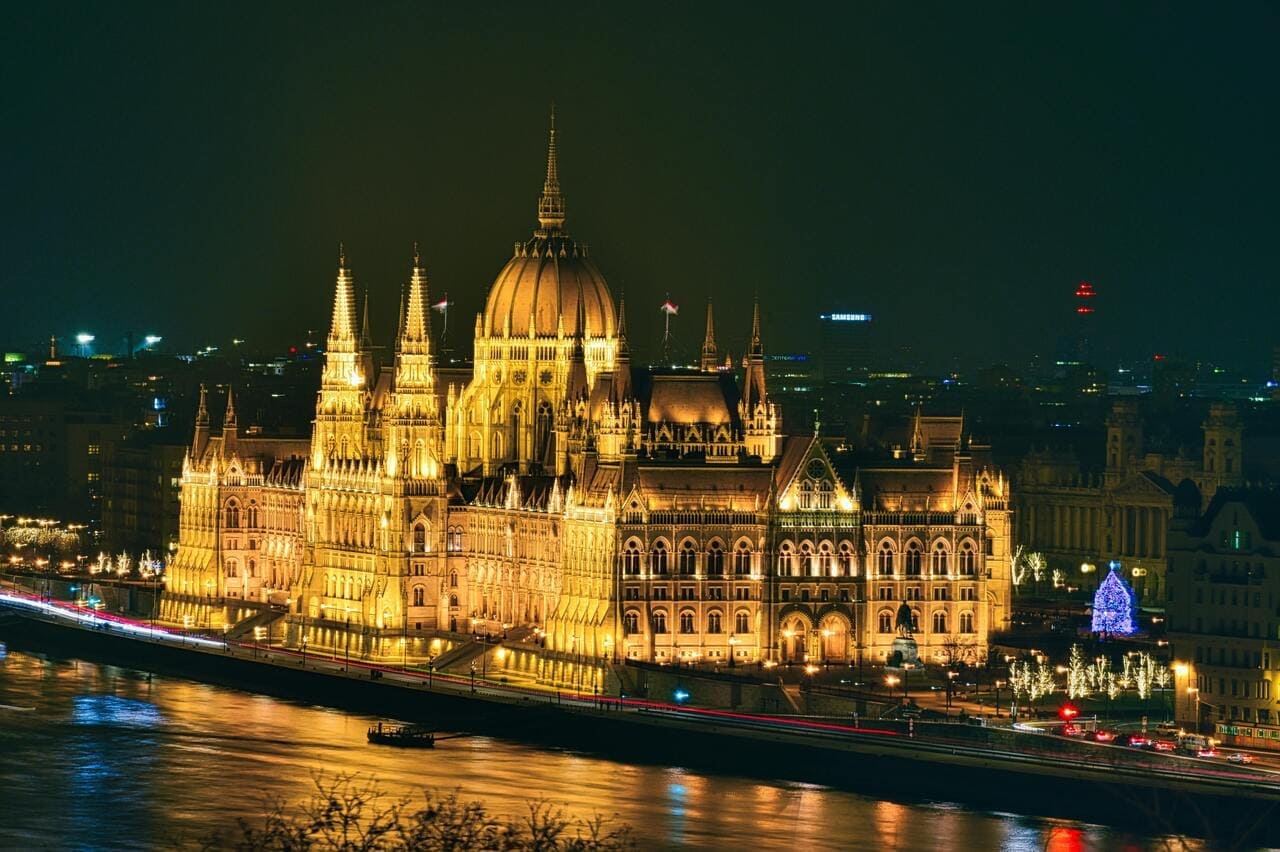
Hungary’s crown jewel on the Danube: the iconic Parliament Building
After seeing the most stunning view of the parliament from the Buda riverside at sunset, visit the Parliament for a guided tour. Towering over the Pest side of the Danube, this Neo-Gothic marvel is the third-largest parliament in the world and undoubtedly one of the most beautiful. Inside, it’s just as regal: guided tours take you through opulent chambers, past frescoed ceilings, gilded staircases, and the Holy Crown of Hungary, which has witnessed centuries of royal history.
St. Stephen’s Basilica
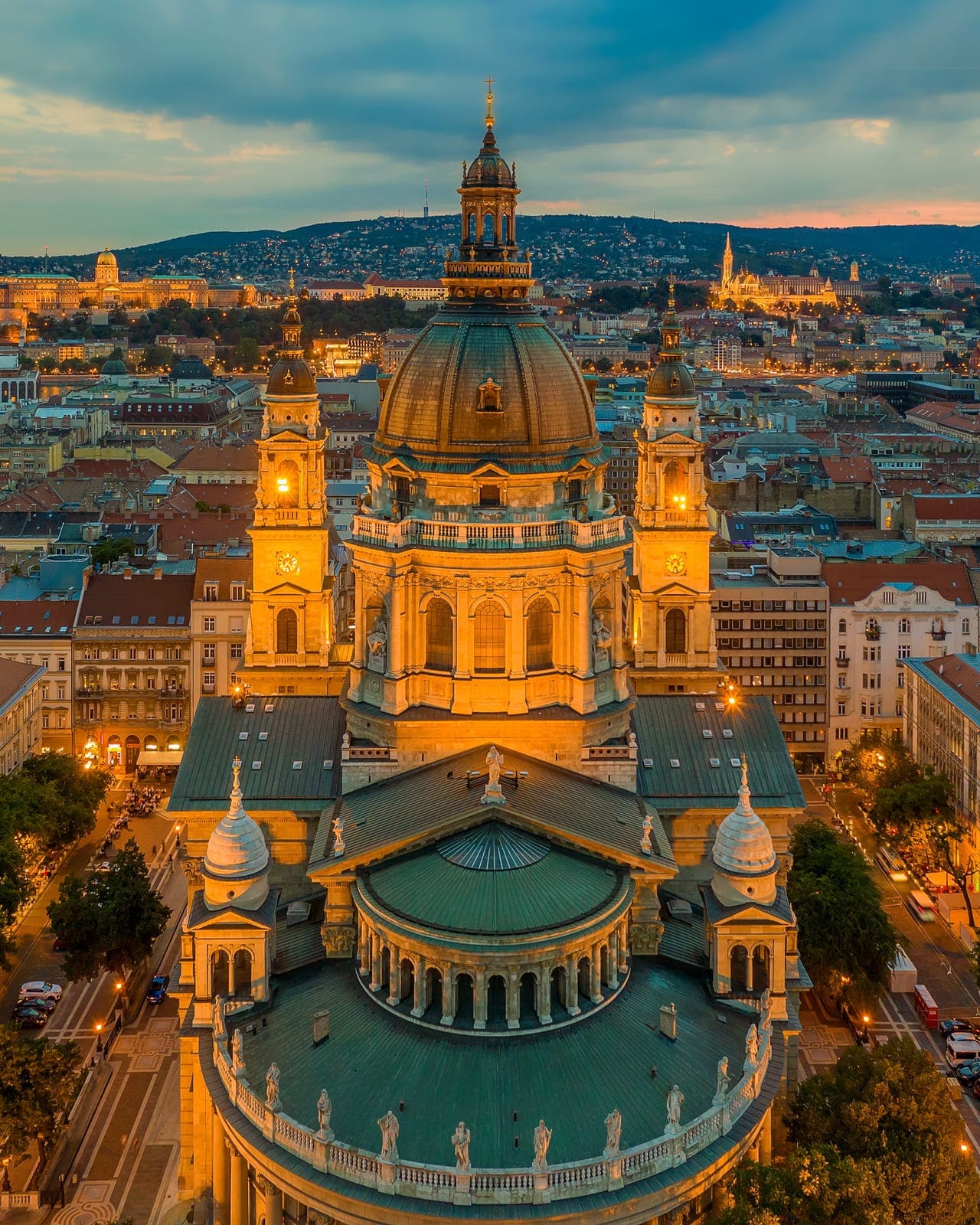
St. Stephen’s Basilica: A majestic tribute to Hungary’s first king, blending neoclassical grandeur with panoramic city views
Commanding the skyline of central Pest, St. Stephen’s Basilica is a grand ode to Hungary’s first king and his mummified right hand, which rests in an ornate, glass-and-gold reliquary. Climb the 364 steps or take the elevator to the panoramic lookout, where sweeping views of Budapest unfold beneath your feet. Stick around for an evening organ performance, the acoustics here make classical concerts sound heavenly.
Andrássy Avenue
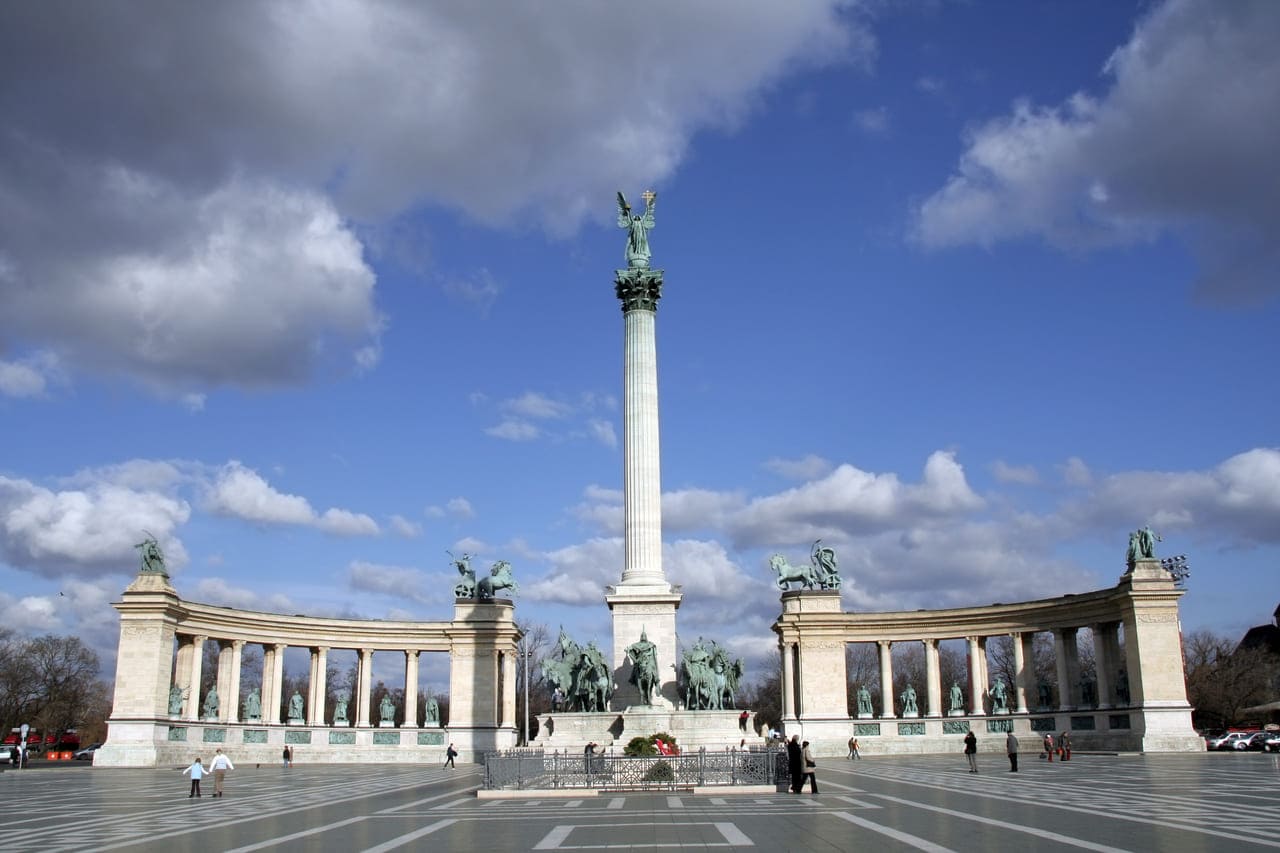
Heroes’ Square: Honoring Hungary’s founding heroes in iconic grandeur
Often likened to the Champs-Élysées, Andrássy Avenue is Pest’s grandest thoroughfare, a UNESCO World Heritage boulevard that stretches from the city center all the way to Heroes’ Square, lined with Neo-Renaissance mansions, luxury boutiques, and cultural icons like the Hungarian State Opera House. Whether you are café-hopping, window shopping, or heading to the opera in style, a stroll down Andrássy feels like stepping into a bygone era.
At the end of Andrássy lies Heroes’ Square, a towering column flanked by bronze statues of Hungary’s legendary founders. Just beyond the square, City Park (Városliget) opens into a green wonderland dotted with Vajdahunyad Castle, boating in lakes, and the steaming grandeur of Széchenyi Thermal Bath.
Central Market Hall

Great Market Hall, Budapest – where Hungarian flavors, crafts, and culture come alive under one grand roof
Step into the bustling world of Budapest’s largest indoor market, where locals come to shop and travelers come to taste. Beneath the colorful Zsolnay-tiled roof of Central Market Hall, you’ll find a treasure trove of paprika, salamis, Tokaji wine, pastries, and embroidered souvenirs. Upstairs, grab a plate of lángos – Hungary’s legendary fried dough topped with sour cream and cheese. Perch by the railings to people-watch – it’s a sensory deep dive into authentic Hungarian flavors and culture.
Jewish Quarter & Dohány Street Synagogue: Soul, Story, and Nightlife
Home to Europe’s largest synagogue, the Dohány Street Synagogue is a Moorish Revival masterpiece with twin onion domes, a poignant Holocaust memorial garden, and a compelling Jewish Museum. But beyond its sacred history, the Jewish Quarter is also Budapest’s coolest neighborhood. Crisscross its narrow lanes to discover ruin bars, indie design shops, trendy cafés, and some of the best street art in the city. It’s a vibrant mix of memory and modernity – deeply moving by day, electric by night. Book a walking tour to hear tales of Jewish history, visit synagogues and sample Jewish delicacies.
House of Terror Museum
Set inside the chilling former headquarters of Hungary’s secret police, the House of Terror is one of Budapest’s most powerful museums. Its immersive exhibitions chronicle the country’s struggles under Nazi and Communist regimes, from surveillance and forced labor to resistance and resilience. Descend into the cellars once used for torture, view raw video testimonies, and feel the weight of history pressing in. It’s not an easy visit – but it is an essential one.
Danube Promenade: Bridging the Divide
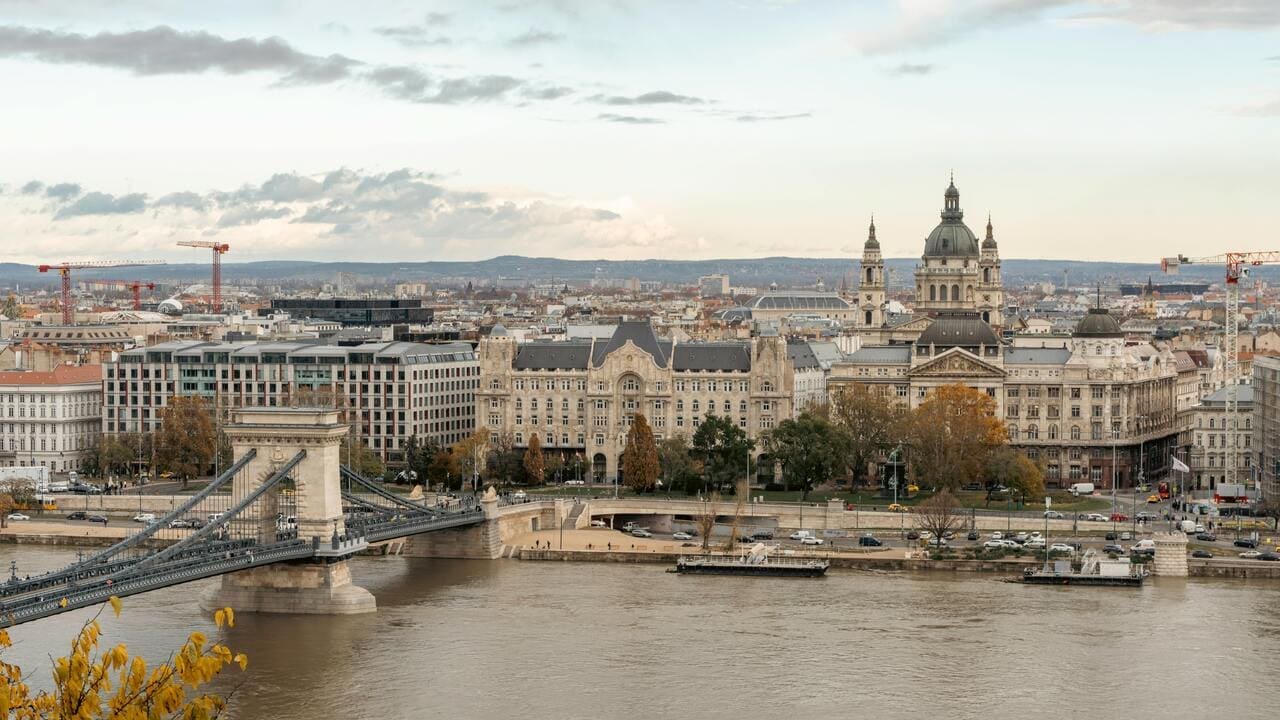
The Danube Bridge – the elegant thread that unites Buda and Pest, weaving history, culture, and beauty into one city
The Danube is a star attraction – a romantic setting for river cruises, especially at dusk when the city lights up like a jewel box. Budapest’s seven bridges each have their own story, but the Chain Bridge remains the symbol of unity, connecting Buda’s royal past with Pest’s modern hustle.
For postcard views and poignant moments, stroll the Danube Promenade, a scenic riverside path connecting the Elizabeth and Chain Bridges. Dotted with sculptures, historic hotels, and inviting cafés, it’s a perfect place to soak in the city’s romance and rhythm.
To truly know Budapest is to embrace both sides of its soul. Together, Buda and Pest form one of Europe’s most fascinating capitals – a place where history and innovation walk hand in hand, and between them flows the Danube – at once a border and a bond. Walk its bridges, float its waters, and explore Budapest from both its banks.
To tick off sights at a faster pace, take a cycling tour or hop on Tram No. 2 that runs along the Pest side of the Danube, to get a scenic, budget-friendly city tour.
Plan Smarter. Travel Deeper.
As a niche destination marketing company, at FlyingCarpet.Travel, we don’t just sell trips, we craft journeys. Browse our curated travel blogs for insider inspiration, book flights, hotels, and immersive experiences, and count on our 24/7 customer support for peace of mind wherever you roam. Whether you’re dreaming of soaking in Budapest’s thermal baths or chasing wildlife on an African safari, our expert team is here to make your next adventure effortless and unforgettable. We recommend LOT Polish Airlines or Lufthansa for your trip to Budapest from the US.
Frequently Asked Questions About Traveling to Budapest
What currency is used in Budapest?
Budapest uses the Hungarian Forint (HUF). While many places accept credit cards, it’s helpful to carry some cash for markets and small vendors.
Do I need to know Hungarian when exploring Budapest?
English is widely spoken in tourist areas but learning basic Hungarian phrases like “köszönöm” (thank you) and “szia” (hello) can enhance your experience.
What is the best way to get around Budapest?
Budapest has an efficient public transport system including metros, trams, and buses. Tickets must be bought and validated before travel. Walking is also a great way to explore the city.
When is the best time to visit Budapest?
The best times to visit are spring (April-May) and autumn (September-October) when the weather is mild and crowds are fewer. Summers are hot and busy, while winters offer festive Christmas markets.
How safe is exploring Budapest for tourists?
Budapest is generally safe. However, be cautious of pickpockets in crowded areas like public transport and markets. Keep valuables secure and stay aware.
What type of electrical plugs and voltage does Budapest use?
Hungary uses 230V, 50Hz electrical supply with Type C and F plugs. Travelers should bring appropriate adapters if coming from outside Europe.
What are some must-try foods in Budapest?
Try traditional Hungarian dishes like goulash, langos (fried dough), and chimney cake (kürtőskalács). Hungarian wines and pálinka (fruit brandy) are also local favorites. Budapest is known for its quirky ruin bars, get an insider’s guide to Budapest nightlife by taking our tour.
Is tipping customary in Budapest?
Yes, tipping 10-15% in restaurants is standard if service charges aren’t included. Small tips are also appreciated by taxi drivers and hotel staff.
Are there free walking tours in Budapest?
Free or tip-based walking tours provide a great introduction to the city’s history and culture. However, paid tours usually cap their group sizes, so you won’t be straining to hear your guide. Travelers who care for an enriching experience to explore a city layered with complex history, stunning architecture, and diverse cultural influences, should opt for a relaxed affordable guided walking tour.
Is Wi-Fi available in Budapest?
Free Wi-Fi is common in cafes, restaurants, and many public places. You can also purchase a local SIM card for mobile data.
What are some cultural tips to know before exploring Budapest?
Hungarians appreciate politeness, so simple words like “please” (“kérem”) and “thank you” (“köszönöm”) go a long way. Respect local customs and be patient if there’s a language barrier.
